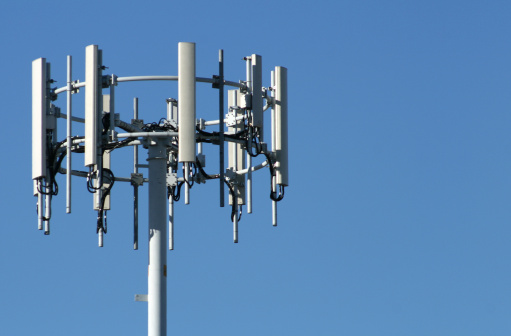Telecom & Wireless
Top Ten U.S. Wireless Trends in 2013 for Investors to Bank On
Published:
Last Updated:
The intense battle for the wireless customer and the consumer dollar heated up in the first quarter of 2013. Surprisingly, smartphone activation, which is a key data point for the carriers, actually slowed. While the battle continues between Apple Inc. (NASDAQ: AAPL) and Samsung for smartphone loyalty, the carriers continue to slug it out for the wireless customer.
The wireless analysts at UBS A.G. (NYSE: UBS) did a thorough examination of all the first-quarter wireless data and found some pretty interesting trends. In recently released research, they highlight the 10 top trends in the U.S. wireless industry.
1. The wireless industry reported a net addition of 214,000 new subscribers, versus a loss of 14,000 last year. The industry also reported a loss of 783,00 handset users, almost double the year ago level. They expect this trend to continue and to pressure service revenue growth.
2. Verizon Communications Inc. (NYSE: VZ) continues to lead the carriers, with its 5.9% annual growth rate in subscribers. AT&T Inc.’s (NYSE: T) subscriber base grew a little more than 2%. Sprint Nextel Corp. (NYSE: S) subscribers continued to leave the carrier. A purchase of Sprint may be completed by this summer.
3. T-Mobile US Inc. (NYSE: TMUS) was the only carrier to actually gain a substantial number of new customers. The company sold more than 500,000 iPhones in a three-week period and launched service for the popular smartphone early in the second quarter. Most of the Sprint losses can be attributed to this very aggressive customer campaign.
4. Average revenue per user (ARPU) grew just 1.1%. That was down from 1.8% in the fourth quarter of last year and 3% from a year ago. While revenue growth has skyrocketed with more and more consumers spending time on their phones, the UBS analysts think a plateau may have been hit for now.
5. The carriers reported that smartphone new activations have dropped dramatically this year. They were up just 4.2%, after growing 16.7% in the fourth quarter of last year. Smartphone penetration, which is the number in use as a percentage of all cell phones, increased to 68.4%. That is encouraging statistic for the carriers, as it is still a long way from an anticipated final 83% level. This also could bode well for chip companies like Qualcomm Inc. (NASDAQ: QCOM) and Broadcom Corp. (NASDAQ: BRCM), in addition to the carriers and smartphone companies.
6. The industry activated 10.3 million of the popular Apple iPhone, up 15% versus the same period of last year. Sprint gained the most on a percentage basis, going from 21% to 26%. Verizon maintained its 45% share of the iPhone, while AT&T saw its share drop from 34% to 29%.
7. Industry revenue on an EBITDA basis grew 12.1%. All of the big four carriers saw margin improvement, thanks to a 6.6% upgrade rate. While that may sound like a strong number, it was the slowest upgrade rate since UBS began tracking the number in 2007. Going from an iPhone 5 to an iPhone 6 is an example of what comprises the upgrade rate.
8. Prepaid subscribers, or customers who pay for their plan upfront, grew just 5.4% in the first quarter. That was down from 6.7% in the fourth quarter and 10.8% a year ago. The UBS analysts expect just 1.9% prepaid subscriber growth in 2013. This comes even as the major carriers add and expand these plans.
9. Verizon continues to lead in adopting 4G LTE, with AT&T closing the gap fast. Faster carrier speeds for uploading and downloading of data, entertainment, video and gaming are imperative for continued user revenue growth.
10. The major carriers wireless capital expenditure (capex) budgets are growing fast. If the carriers spend more on new networks, this could prove extremely beneficial for the cell phone tower stocks. American Tower Corp. (NYSE: AMT), Crown Castle International Corp. (NYSE: CCI) and SBA Communications Corp. (NASDAQ: SBAC) all stand to benefit from the 4G LTE network build outs.
The UBS analysts are quick to point out that multiple risks do exist, including operational and financial leverage, potentially adverse regulatory rulings, changes in technology, increasing competition and exposure to economic cycles. The future for the wireless industry and companies with business plans leveraged to the industry is bright. Investors may want to wait for a market pullback to add some of the sector’s top names.
Start by taking a quick retirement quiz from SmartAsset that will match you with up to 3 financial advisors that serve your area and beyond in 5 minutes, or less.
Each advisor has been vetted by SmartAsset and is held to a fiduciary standard to act in your best interests.
Here’s how it works:
1. Answer SmartAsset advisor match quiz
2. Review your pre-screened matches at your leisure. Check out the advisors’ profiles.
3. Speak with advisors at no cost to you. Have an introductory call on the phone or introduction in person and choose whom to work with in the future
Thank you for reading! Have some feedback for us?
Contact the 24/7 Wall St. editorial team.